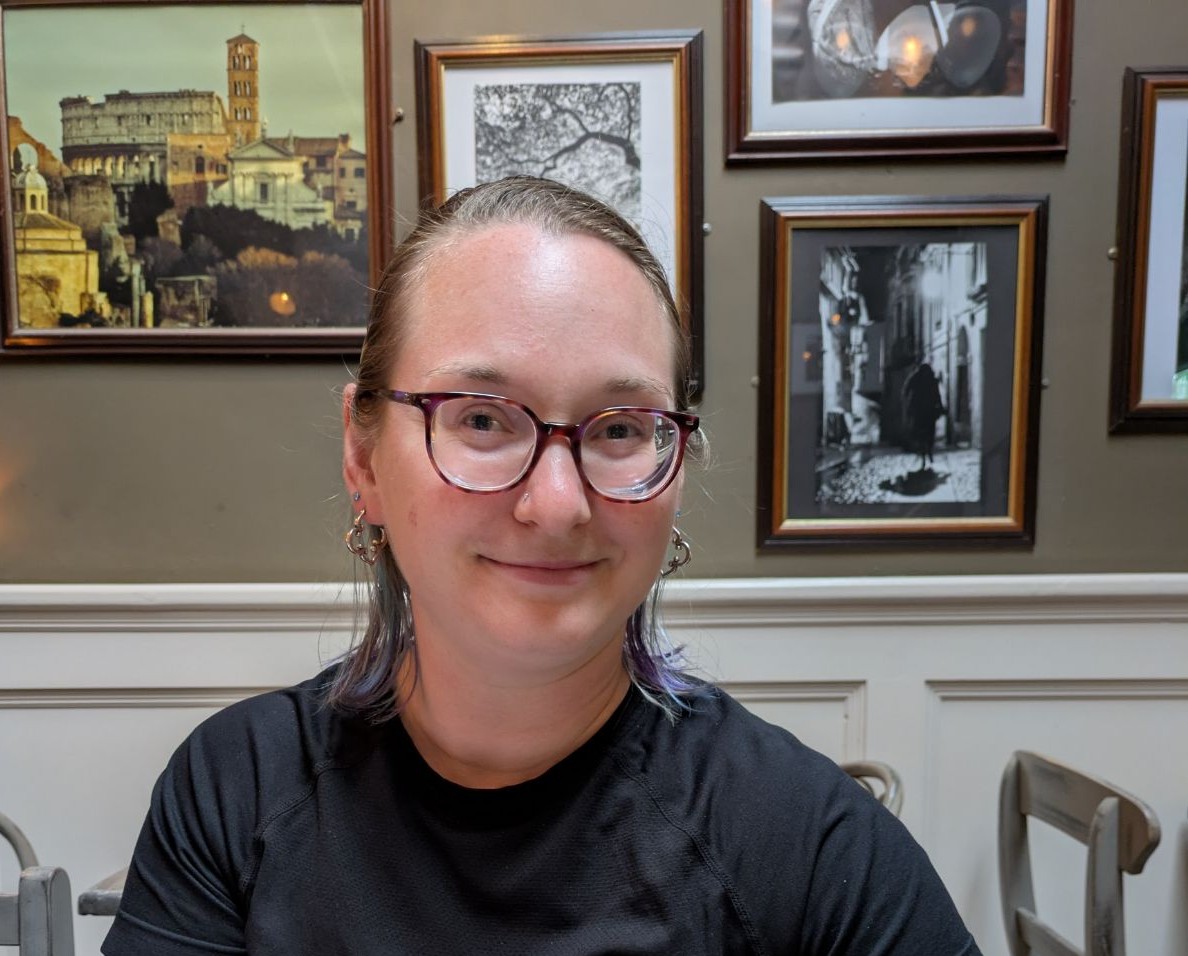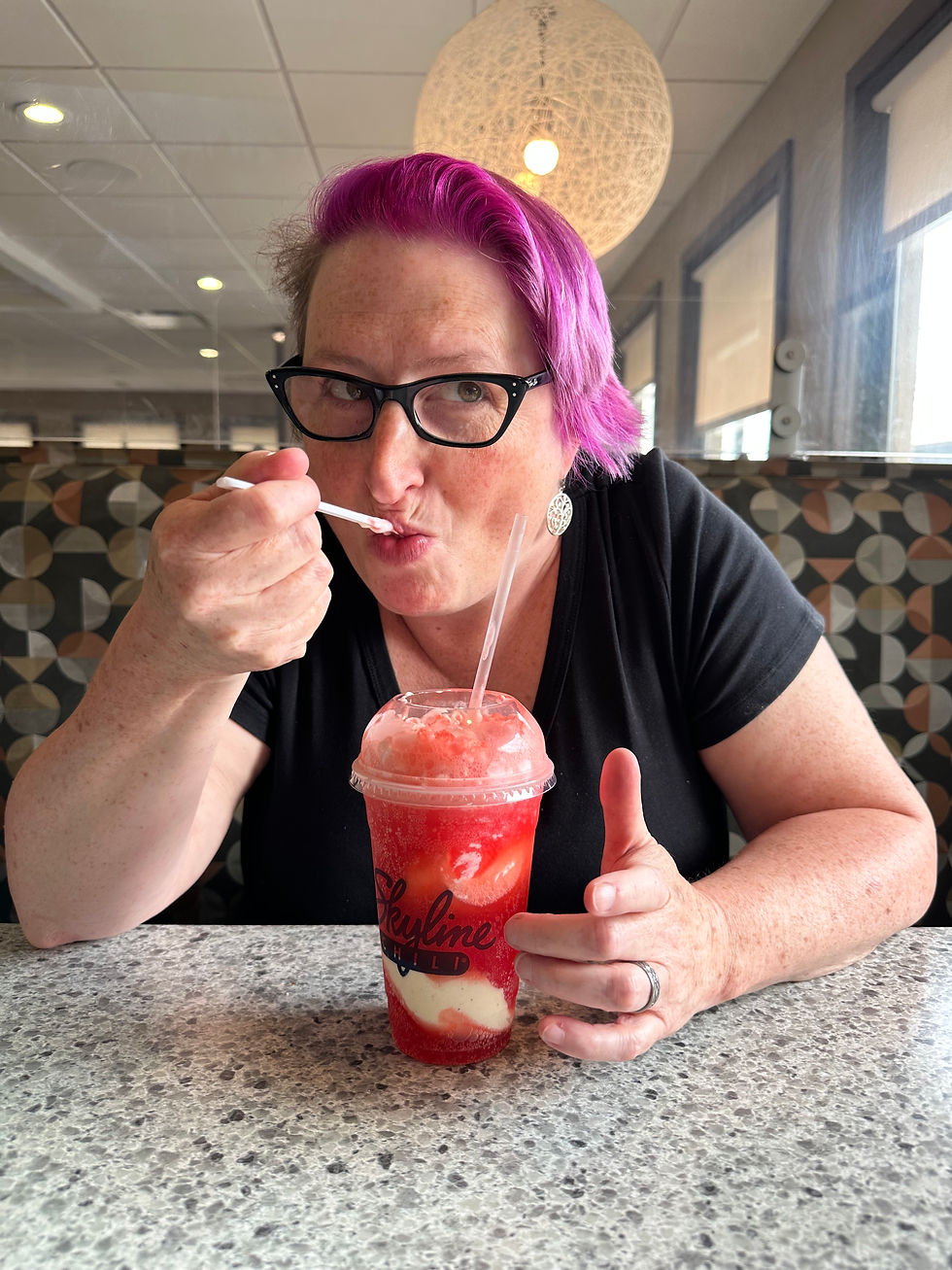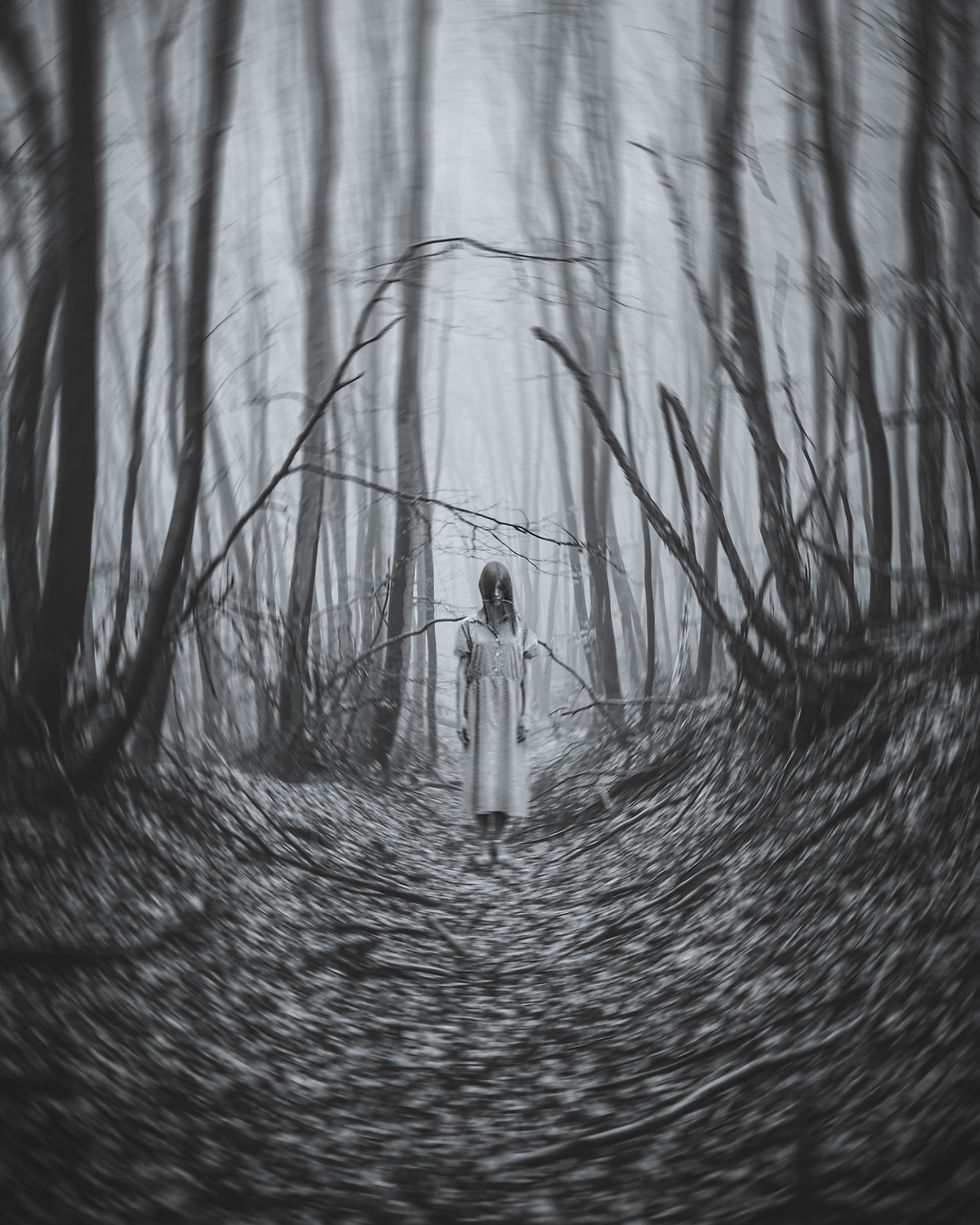Exclusive Interview With Author Samantha Dunaway Bryant
- Angela Heiser

- Oct 10
- 9 min read
Author Samantha Dunaway Bryant recently took the time to answer Ink & Oak’s burning questions via email. Keep reading for more on her forthcoming titles and bookish events you can find her at over the next few weeks.

A Brief Biography
North Carolina based author Samantha Dunaway Bryant is most well known for her Menopausal Superheroes series. When she is not writing horror or superhero stories, she loves to spend time in the woods. Read her recent short story, “Hello Flesh” to get a feel for her witty word-bending style.
Be sure to mark your calendar for her upcoming readings in Durham and Raleigh in October and November! If you’re lucky, you might even snag one of her last remaining copies of her out of print short story “Ashes.” You can find Samantha online here.
Are there any specific authors that inspire you and your writing?
I’m a huge fan of Shirley Jackson, author of that short story “The Lottery” that traumatized you in middle or high school. I especially love her novel We Have Always Lived in the Castle and emulate that same kind of quiet, domestic horror when I’m writing something spooky or creepy.
My Menopausal Superheroes series is much lighter and more optimistic. It’s really a response to a lifetime of superhero fandom, so in a roundabout way, it’s inspired by the work of writers and creators like Stan Lee, Roy Thomas, and Gail Simone.
My romance work probably finds its origins in the Barbara Mertz’s (pen name Elizabeth Peters) Amelia Peabody series, the first romance series I read that allowed for the protagonists to grow and change and even get old.
Tell us about your writing practice. What schedule, if any, do you follow? What do you do when you don’t know what to write next?
I’m a “write every day” gal. With my particular flavor of ADD, I have trouble building habits if they’re not daily habits. So I have a rule that I have to at least touch my main project every single day. I average 400-800 words a writing session, though there are definitely days with more and LOTS of days with less. I try to balance holding myself accountable against driving myself crazy.
On weeknights, I write at night, after working my day job as a content strategist for a big financial company and seeing my family through supper, though occasionally I can slip in a lunchtime writing session, too. On the weekends, I shoehorn my writing time around the rest of the demands of life, whatever time of day that’s possible. I can usually get between one and two hours a day, which isn’t enough for all I want to do, but keeps me moving forward.
If I can’t move forward on my main project when I sit down to write, I write something else: a short story, a blog post, a book review, a proposal for something, some business plans, etc.
If I really can’t get anywhere, I write a journal entry kvetching about how I can’t get anything done and complaining about what’s in my way. Sometimes having vented to my journal like that helps clear the mental clutter and lets me focus again, but even when it doesn’t, it helps to let it out and it often goes better at the next writing session.
It has been a decade since your first novel came out. What has most surprised you about your writing journey? Is there anything you would do differently?
Once I found that first publisher, I really thought that would be a forever relationship. But that company imploded four years in and I had to restart. But I’m a stubborn gal, difficult to dissuade, so I kept moving forward. I signed with another company, rebranded, and finished the series. The last Menopausal Superhero novel, Change for the Better, just released in July 2025.
I made the decision to go for a traditional publishing arrangement when I started because I was worried that I’d drown if I tried to swim this particular ocean by myself. I could write a book, but I was less sure about everything else that surrounds writing and publishing: editing, book layout, distribution, marketing, etc. Especially since I had a very demanding job (middle school teaching) and small children at the time. Time was a serious factor, but I was done waiting for “someday” and wanted to get started.
Despite a little drama here and there, that decision has served me well and I don’t regret it. Working with small publishers gave me time to build a following and learn about all the aspects of the business without having to take it all on alone. I got to take advantage of the experience and connections of people who’d been in the business longer than me, and I didn’t have to come up with the dollars for editing services, etc. because the publisher provided those.
Ten years later, I’ve changed to a less demanding job and my children are older. I’m pursuing my first all-indie projects, serving as my own publisher. It’s super exciting! And I’m loving the level of control I have over the whole thing. I’ll probably keep on being a hybrid writer, choosing to work with a traditional publisher for some projects and do it myself for others.
In your recently published flash piece “Hello Flesh,” your humor shines through prose that reads like a dramatic screenplay. There is something poetic about this piece with its pacing, alliteration, and crisp line breaks. What can you tell us about writing this piece and the craft choices you made there?
Thanks! I’m so glad you liked it! I did start my writing life as a poet (back in elementary school), and it still affects how I write, especially when I’m writing short pieces like this one.
Many of my story ideas start as a snarky little thought or a weird observation. This one came about because I was constantly receiving ads for various food delivery services, especially “Hello Fresh.” I started noodling on the idea of what a similar company that served supernatural beings like vampires, zombies, and werewolves might offer.
Deciding what to name the different product lines was a brainstorming process, and the ones that stuck are the ones that amused me the most, and that I thought sounded like what a real company might actually market their services as. Alliteration is definitely king in marketing-land.
I decided a customer service call would be a fun way to approach the premise, and after that it felt like the piece wrote itself.
You have work forthcoming in the Dread Mondays anthology from Whisper House Press. What can you tell us about it? Stories from Shadow Hill, your collection of suburban horror short stories is also forthcoming this October. Tell us about what awaits us in this publication.
I may have a mild addiction to writing for anthologies. Something about the process scratches that “good student wants a gold star” itch in my brain. It’s like getting a good assignment from your favorite teacher in a way—someone else chooses the theme, topic, or genre and you put your own spin on that.
Plus, I get that dopamine burst for finishing a project so much more often writing short stories than novels. I can write a short story in a few days, but a novel takes a year or even multiple years. I’ve got stories in thirty anthologies now which amounts to something like three a year!
I ran across the call for Dread Mondays, which asked for workplace horror stories, and immediately remembered a little flash fiction piece I had written a few years back during a Halloween writing challenge about an icebreaker activity gone wrong. I revisited it, revised it, and sent it off for consideration. I’m so happy it made the cut!
Stories from Shadow Hill is a little different in that it’s a collection of only my own stories, rather than a multi-author anthology. All of these stories are set in an imaginary suburban neighborhood suspiciously similar to the one I live in: Shadow Hill. I loved playing with weird tales happening in a mundane setting. Many of the stories are based on things I saw in my own neighborhood than put a supernatural or spooky spin on.
I enjoyed your reading of your Passover vampire story “His Destroyer,” featured in Slay: Stories of the Vampire Noire. Your worldbuilding and the interiority you give your characters are stunningly captivating, and the premise of the anthology centering on stories of the African diaspora is a refreshing perspective. What sparked this unique take on a vampire tale?
When I saw the open call for Slay: Stories of the Vampire Noire for vampire or vampire hunter stories set in the African Diaspora, I was really impressed by the originality of the theme and excited to explore vampire mythology that wasn’t Bram Stoker all over again. Since part of my ancestry is Jewish I decided that my most authentic entry into the project was to write something set in ancient Egypt, specifically during the time of the ten plagues.
I thought about all the tellings I had ever heard of the events of that time and realized that most stories are very vague on how exactly all those first-born sons died, so I imagined Dienihatiri, a Jewish slave, called to serve by G-d. I really fell into her perspective and found it surprisingly emotionally affecting to write. It’s a deeper, more literary take than many of my horror stories are, and I’m very proud of it.
While it’s unfortunately out of print now, I am curious to know more about your short story “Ashes” from Beyond the Pane anthology, which you say is both Southern Gothic and Dorian Gray. I’d love it if you could elaborate on that. And will readers be able to find this story in print elsewhere, such as in your forthcoming publications?
The Beyond the Pane anthology was a project my critique group put together a few years ago. To teach ourselves about self-publishing and to give the unpublished members of our group a chance to build some publication credits, we decided to produce our own themed anthologies.
Beyond the Pane was our second venture (we’ve now done four of them), and we all wrote short stories beginning with the same first sentence: “There was something not quite right about the window.”
I ended up with a female protagonist, recently heartbroken, living on an isolated homestead when the ex-boyfriend shows back up looking for a mysterious box he left with her. The box put me in mind of the portrait in The Picture of Dorian Gray by Oscar Wilde, an object locked away that empowers and protects evil, and the setting led me into Southern Gothic themes like family history, generational trauma, and loyalty.
I do still have a great fondness for that story and hope to find a way to get it back out there in the world again, maybe as a reprint in a magazine or an anthology, or maybe as part of another short story collection of my own in the future. In the meantime, I still have about five copies left, so people can get one from me if they find me at an in-person event.
What does 2026 hold in store for you? I see that you’re involved in HWA NC. Do you ever teach any workshops? What North Carolina resources can you recommend to horror writers just starting out?
2026 looks pretty exciting so far! I’ve got several new events on my calendar where I’m hoping to connect with new readers and make more writing friends, and I’ll be releasing three GenX romances in spring. That’s a new genre for me and I can’t wait to see how readers receive this work.
I’m active in HWA-NC and we do put on workshops as well as readings and other author events. We also have regular get-togethers for casual conversation and networking. They’re a great group of folks who really cheerlead on another’s efforts. You don’t have to be published yet to join. In fact, I wish I had joined a lot earlier to gain even more from the mentorship opportunities.
I’ve also learned a lot through my membership in the Women’s Fiction Writers Association, which has an active Triangle-area chapter as well as a large international online community. They provide a lot of educational opportunities in the form of webinars and workshops.
My publisher for the Menopausal Superheroes series, Falstaff Books of Charlotte, NC, hosts a speculative fiction focused writing conference each year called SAGA which is well worth attending. John Hartness brings in top-notch instructors and has a wealth of experience and knowledge about publishing (and professional wrestling, and theater production, strangely enough).
Do you have any events or readings coming up in North Carolina that our readers can attend?
I do! In October, I’ve got two HWA events:
Heart of Halloween, a multi-author reading with Kat Craig, Robert Creekmore, Richard Dansky, Rikki Goodwin, Jes Malitoris, Joseph Murnane, and Jon Carroll Thomas at Moondog Meadery (1104 Broad St, Ste C, Durham, NC 27705) on Saturday October 18 at 7:00 p.m.
Mystic Haunted Trail and Horror Stories on Halloween night 7:30-11:00 at Mystic Farm and Distillery (1413 Stallings Rd., Durham, NC 27703)
In November, I’ve got two more events:
Pages at Dusk, an NC Indies Oak&Ink Bookish Boutique November 7, 5:00-8:00 at R&D Brewing (1399 Capital Blvd, Raleigh, NC)
The Geekery Market, a charity bazaar November 15, 10:00-4:00 at Cabarrus Arena & Events Center (4751 NC Highway 49 North, Concord, NC).
I’ve got a few other things in the works, but they’re not nailed down yet, then a very busy spring full of signings, festivals, readings, and the like.
Gratitude & an Invitation to Send Us Your Story
Thank you once again to Samantha Dunaway Bryant for taking the time to tell us more about her creative practice and what 2026 holds for her.
Were you motivated by “Hello Flesh,” to wrap up loose ends on your most recent spooky piece? Ink & Oak is now reading short horror stories, and we’d love to stay up late reading yours. Submit your horror shorts here and be the reason we check under our beds tonight.


Comments